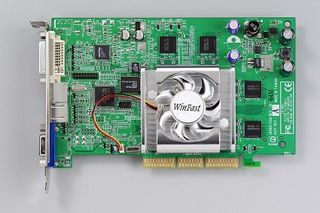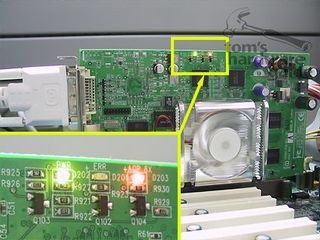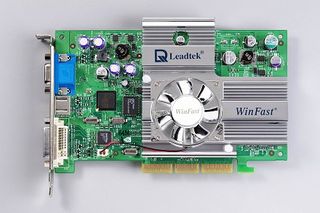NV18 & NV28: NVIDIA Chips with AGP-8x Flavor
Conclusion
As expected, AGP 8x can safely be considered a marketing feature for now. Although it sounds impressive, it offers no real benefit for the current generation of games. A GPU like the GeForce4 MX440 would be unable to handle the amount of data the 8x interface is capable of supplying anyway, and it would be much slower than the on-board memory as well. The most telling sign that the switch to AGP 8x is more of a calculated marketing move than a push for desperately needed hardware resources is the fact that the only two NVIDIA cards that are being "upgraded" to the new interface are also the company's mainstream cards, the best sellers MX440 and Ti4200, while the heavyweights Ti4400 and Ti4600 remain unchanged.
At least the switch brings with it the additional and more tangible upgrade of a clockspeed increase for the MX440-8x, bringing it into the performance regions of the MX460. This also does a lot to close the performance gap to the Radeon 9000 Pro, even allowing the 8x MX to overtake it in Jedi Knight II. Nonetheless the MX chip is still inferior to the Radeon 9000 Pro where 3D features are concerned, since it is still a DirectX 7 chip. The Radeon 9000 Pro, on the other hand, comes equipped with both vertex and pixel shaders, thanks to its close relation to the Radeon 8500. Strangely, this will have less impact on OEM sales than a nice big number like "8x." Crazy world? My thoughts exactly!
New Cards With NVIDIA GeForce4 Ti4200-8x And MX440-8x
Some pictures of MX440-8x and Ti4200-8x boards from several companies that have already announced products based on these chips:

Leadtek WinFast A180 (GeForce4 MX440-8x).

Leadtek WinFast A180 AGP8x LED.

Leadtek WinFast A280 (GeForce4 Ti4200-8x).
Stay on the Cutting Edge
Join the experts who read Tom's Hardware for the inside track on enthusiast PC tech news — and have for over 25 years. We'll send breaking news and in-depth reviews of CPUs, GPUs, AI, maker hardware and more straight to your inbox.
Current page: Conclusion
Prev Page 3D Mark 2001 SE B330 Next Page New Cards With NVIDIA GeForce4 Ti4200-8x And MX440-8x, ContinuedMost Popular

